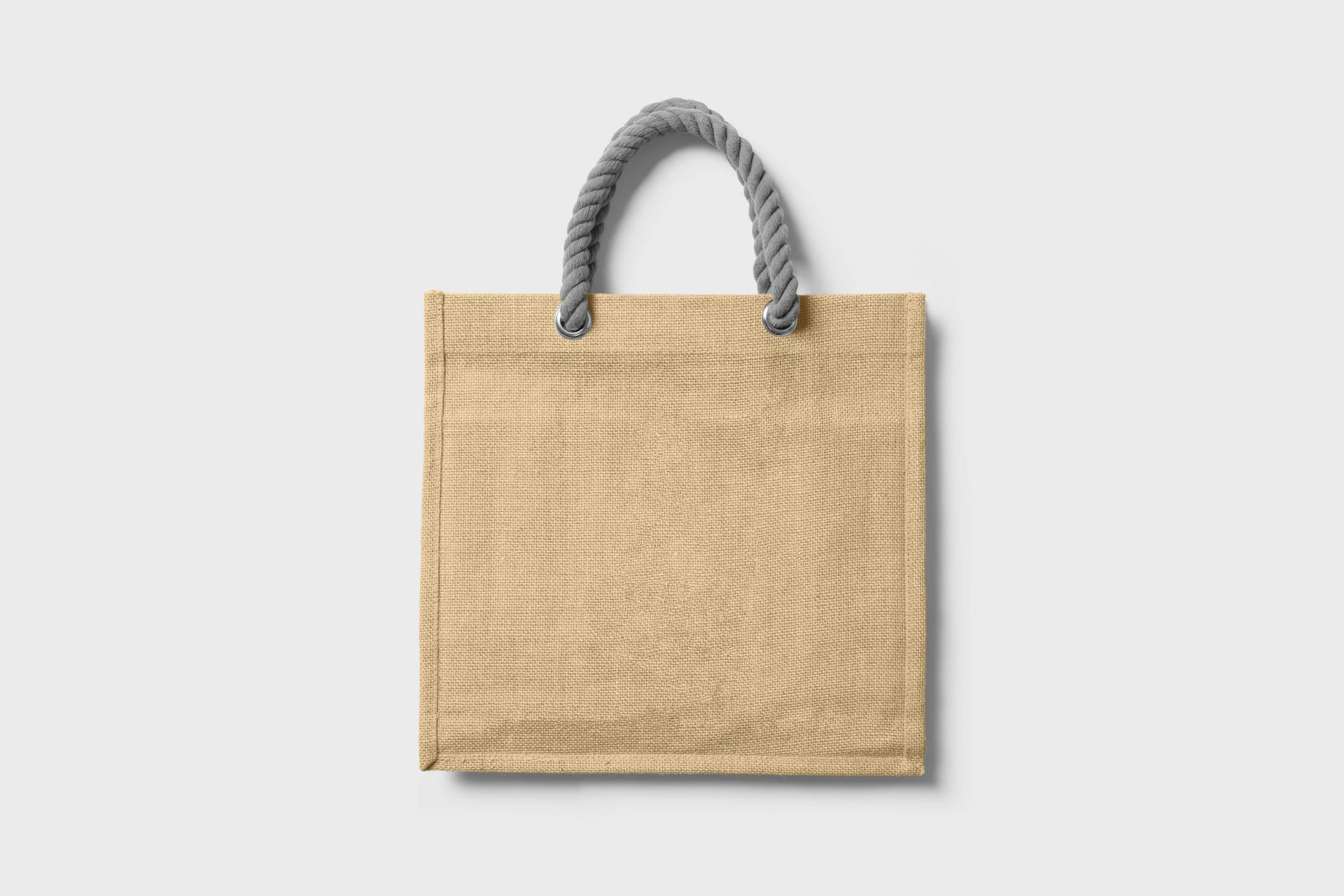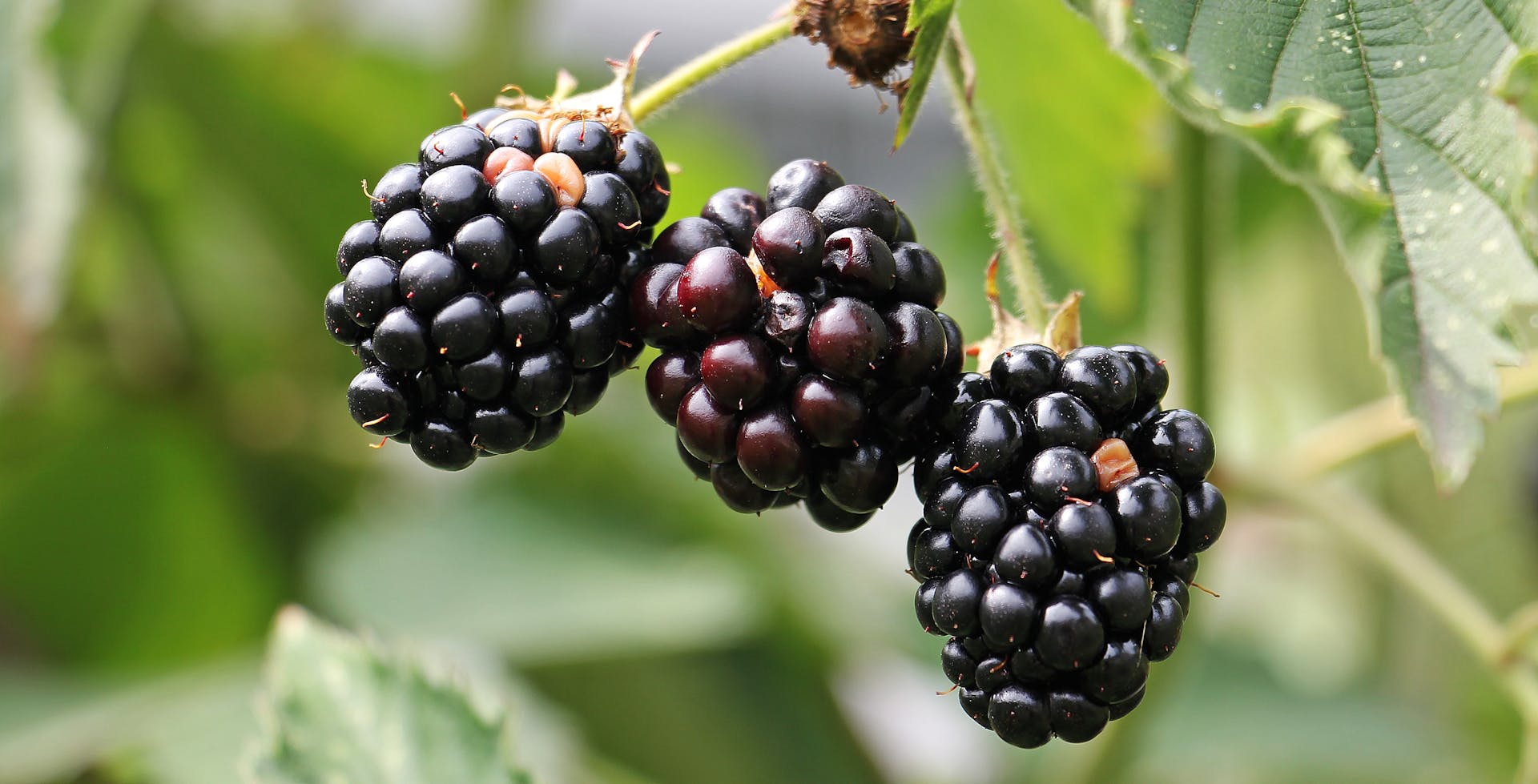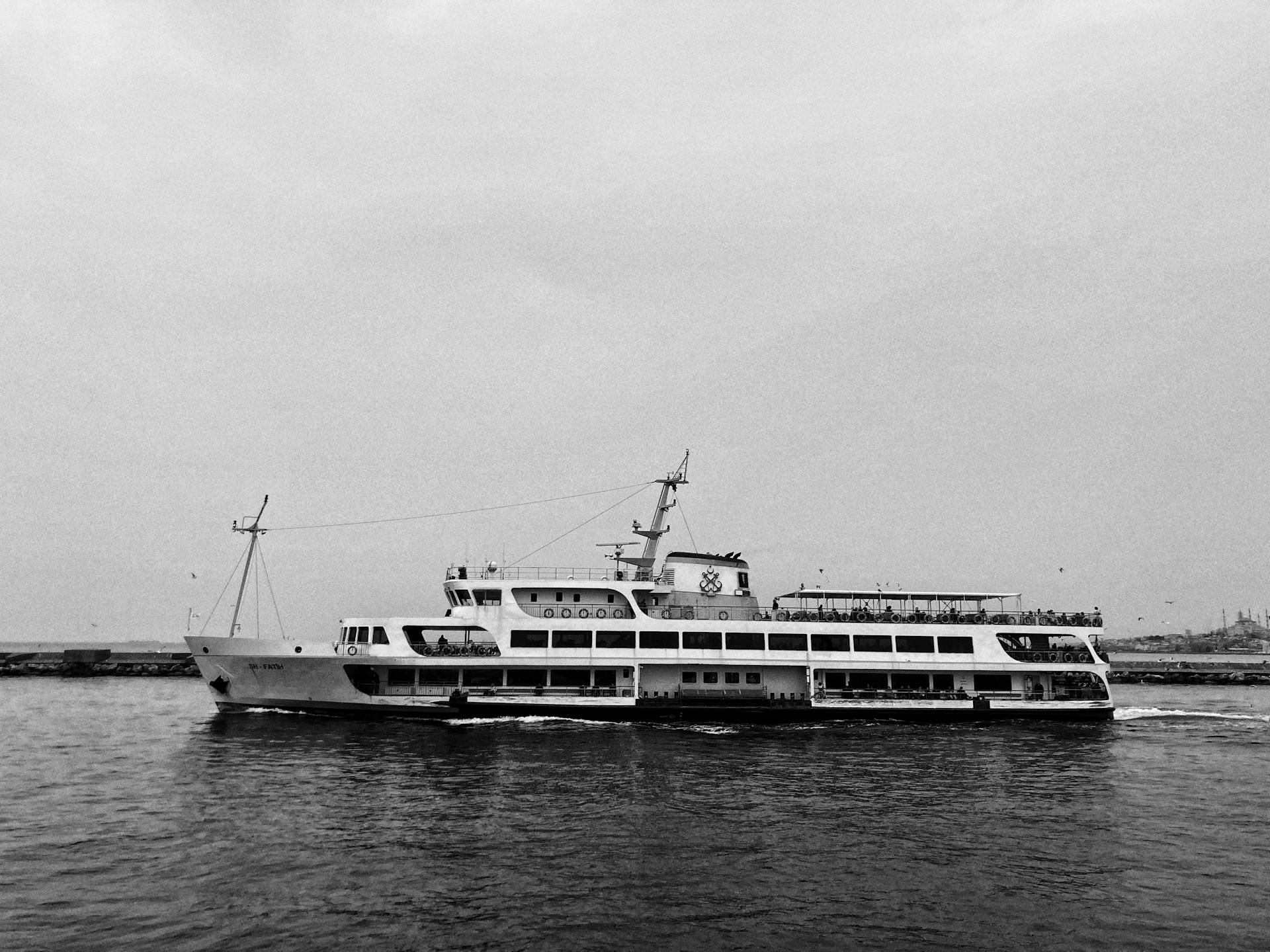
The MV Coho Black Ball Ferry Line is a vital transportation link between the communities of Victoria, British Columbia, and Port Angeles, Washington. It operates year-round, providing a convenient and scenic way to travel between the two cities.
The ferry line connects the southern tip of Vancouver Island to the Olympic Peninsula, offering stunning views of the surrounding waters and mountains. This route has been in operation since 1959.
Each year, the MV Coho carries thousands of passengers and vehicles across the Strait of Juan de Fuca, playing a significant role in the local economy. Its reliability and efficiency make it a popular choice for commuters, tourists, and cargo shippers alike.
Additional reading: Mv Coho Ferry
History and Partnerships
The M.V. Coho has a rich history dating back to December 29, 1959, when it took its maiden voyage from Port Angeles, WA to Victoria, BC, Canada.
Designed by Philip F. Spaulding & Associates and built by Puget Sound Bridge & Dry Dock in Seattle, WA, the Coho has been well-maintained over the years, taking a two-week break each January for a thorough check-up and fresh coats of paint.
The Coho has carried over 22 million passengers and 6 million vehicles between Port Angeles and Victoria with daily sailings, aside from its annual break.
A Brief History
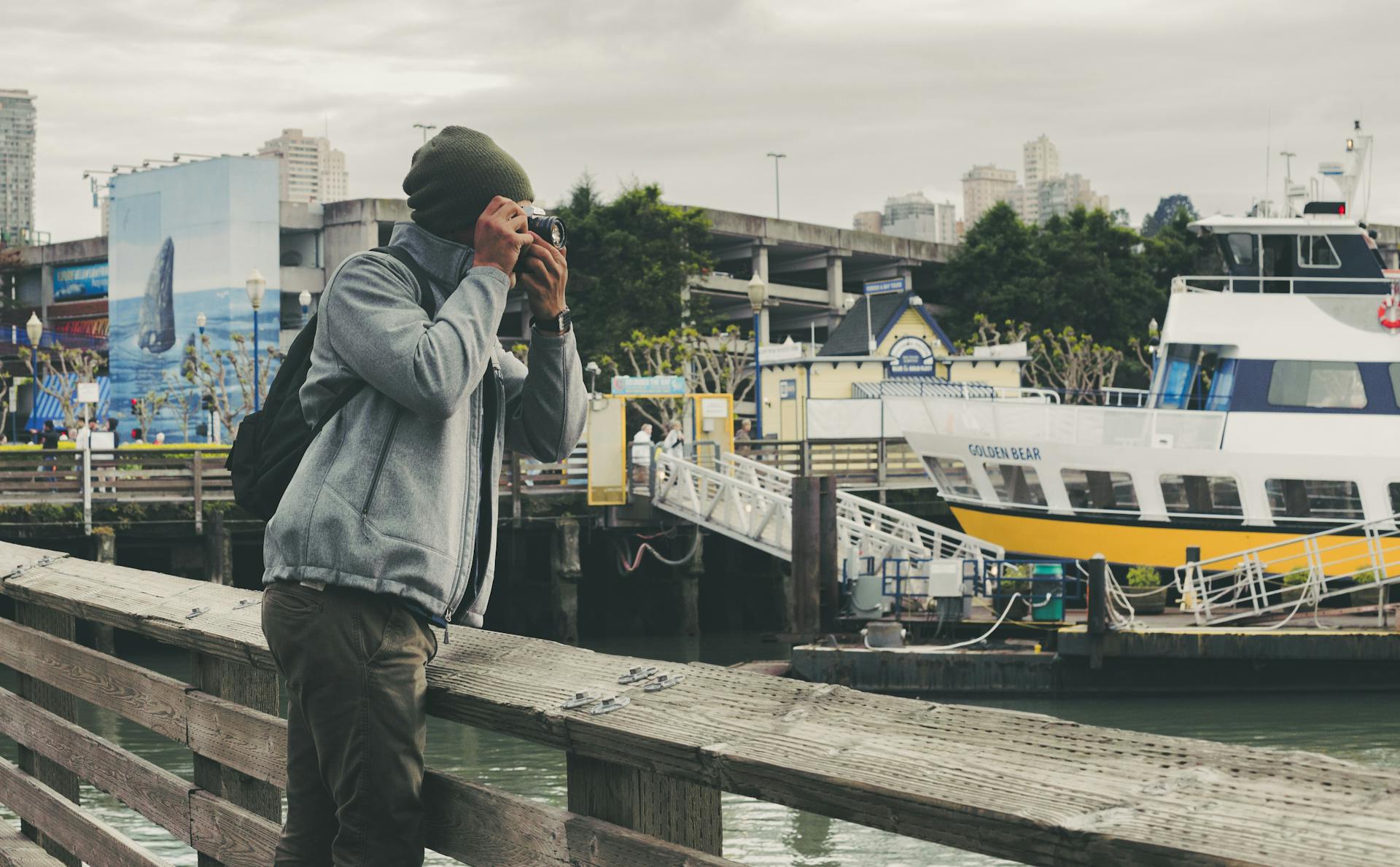
The M.V. Coho has a rich history that spans over six decades. It was designed by Philip F. Spaulding & Associates and built by Puget Sound Bridge & Dry Dock in Seattle, WA.
The ferry took its maiden voyage on December 29, 1959, traveling from Port Angeles, WA to Victoria, BC, Canada. The Coho has been a reliable mode of transportation ever since.
With daily sailings, the ferry has carried over 22 million passengers and 6 million vehicles between Port Angeles and Victoria. It's impressive to think about all the people and vehicles that have made use of the Coho's services.
Black Ball Lease Extension Marks New Partnership
The Black Ball lease extension marks a significant new partnership between the ferry line and the government. This partnership is part of a larger effort to improve transportation on Vancouver Island.
The Black Ball Ferry Line has committed to providing safe, affordable, and reliable transportation from Victoria's Inner Harbour for decades to come. They're working closely with the government to make this happen.
See what others are reading: Black Ball Line (trans-Atlantic Packet)

The Belleville Ferry Terminal properties will be considered in the Vancouver Island Transportation Strategy, which aims to improve the movement of goods and people by land, rail, air, and sea on the Island. This strategy will help ensure that transportation is safe and reliable.
This partnership is also part of the provincewide 10-year transportation plan, which will outline the government's vision and priorities for the next decade. This plan will help guide transportation decisions and investments across the province.
The government is working quickly to develop a plan of action, and Black Ball Ferry Line is pleased to be a part of it.
Related reading: Bainbridge Island Ferry Seattle Ferry Terminal Seattle Wa Usa
Coho Ferry Line Ready for Decades, Official Says
The Coho Ferry Line is a beloved institution in the Pacific Northwest, and it's reassuring to know that it's ready for decades to come. Ryan Malane, Black Ball Ferry Line director of marketing, stated that the MV Coho has about 90 percent of its original shell and has been extremely well maintained.
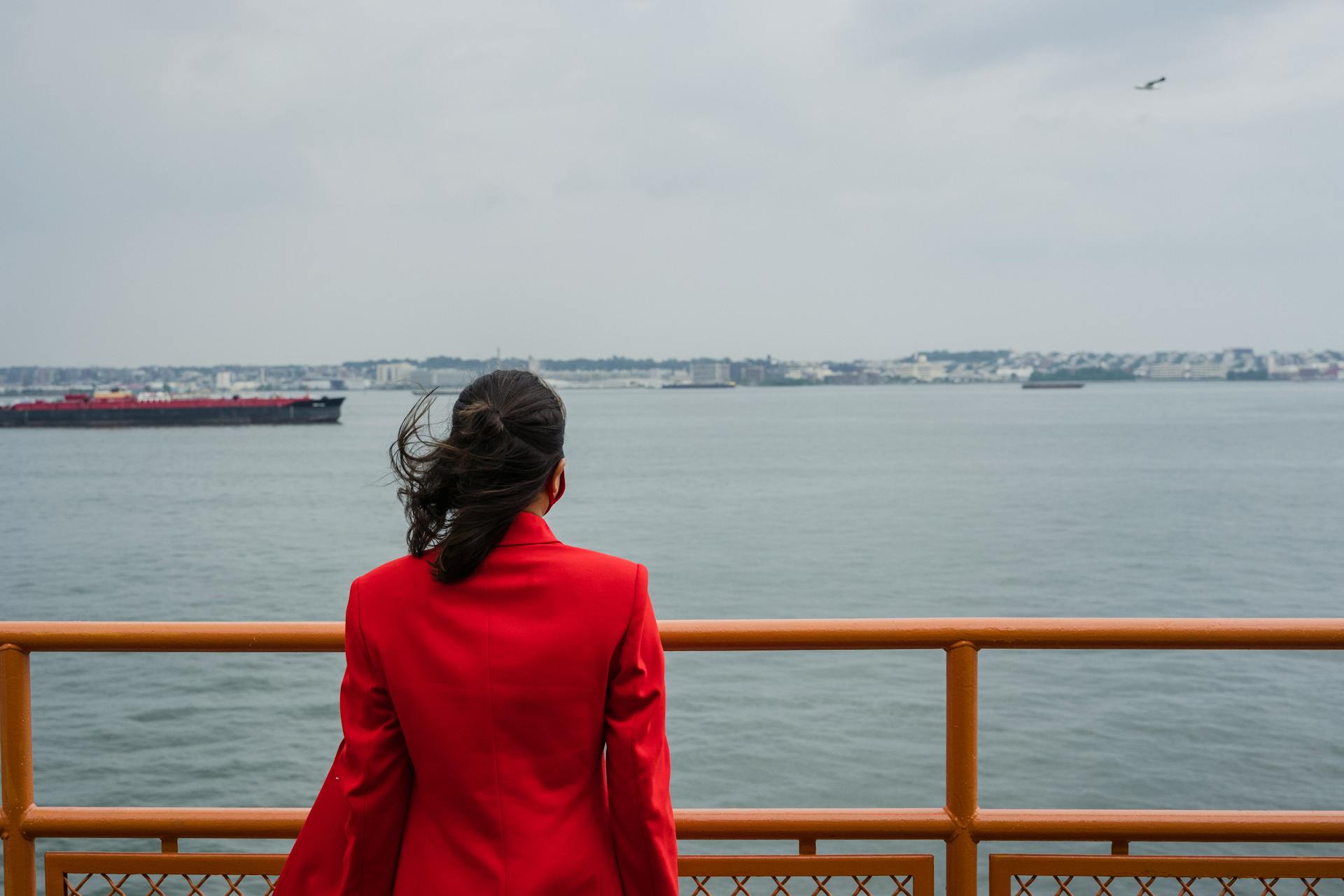
This ferry has been in service for 55 years, plying the Strait of Juan de Fuca between Port Angeles and Victoria. The MV Coho has transported more than 22 million passengers and over 6 million vehicles since its inception in 1959.
The ferry operates on a daily basis, making four trips between May and September, and two trips during the rest of the year. During peak seasons, the ferry offers three trips to accommodate visitors celebrating Columbus Day and Canadian Thanksgiving.
Here are the driving distances and times from Port Angeles to nearby cities:
- Sequim: 17 miles (27.35 km), approximately 30 minutes by car
- Port Townsend: 47 miles (75.6 km), approximately 1.04 hours by car
- Forks: 56.3 miles (90.6 km), approximately 1.1 hours by car
- Seattle: 82 miles (132 km) via the Bainbridge Ferry, approximately 2.38 hours if the wait times are reasonable.
The MV Coho will be out of operation from January 4 to February 29 to accommodate the construction of a new dock in Victoria, so be sure to plan ahead if you're traveling during that time.
Operations and Infrastructure
The MV Coho Black Ball Ferry Line operates between Victoria, British Columbia, and Port Angeles, Washington, with a journey time of approximately 90 minutes.
The ferry has a capacity for 1,500 passengers and 340 vehicles, making it a convenient option for travelers and commuters.
The MV Coho has a length of 340 feet and a beam of 64 feet, allowing it to navigate through the waters of the Strait of Juan de Fuca.
Route and Accessibility
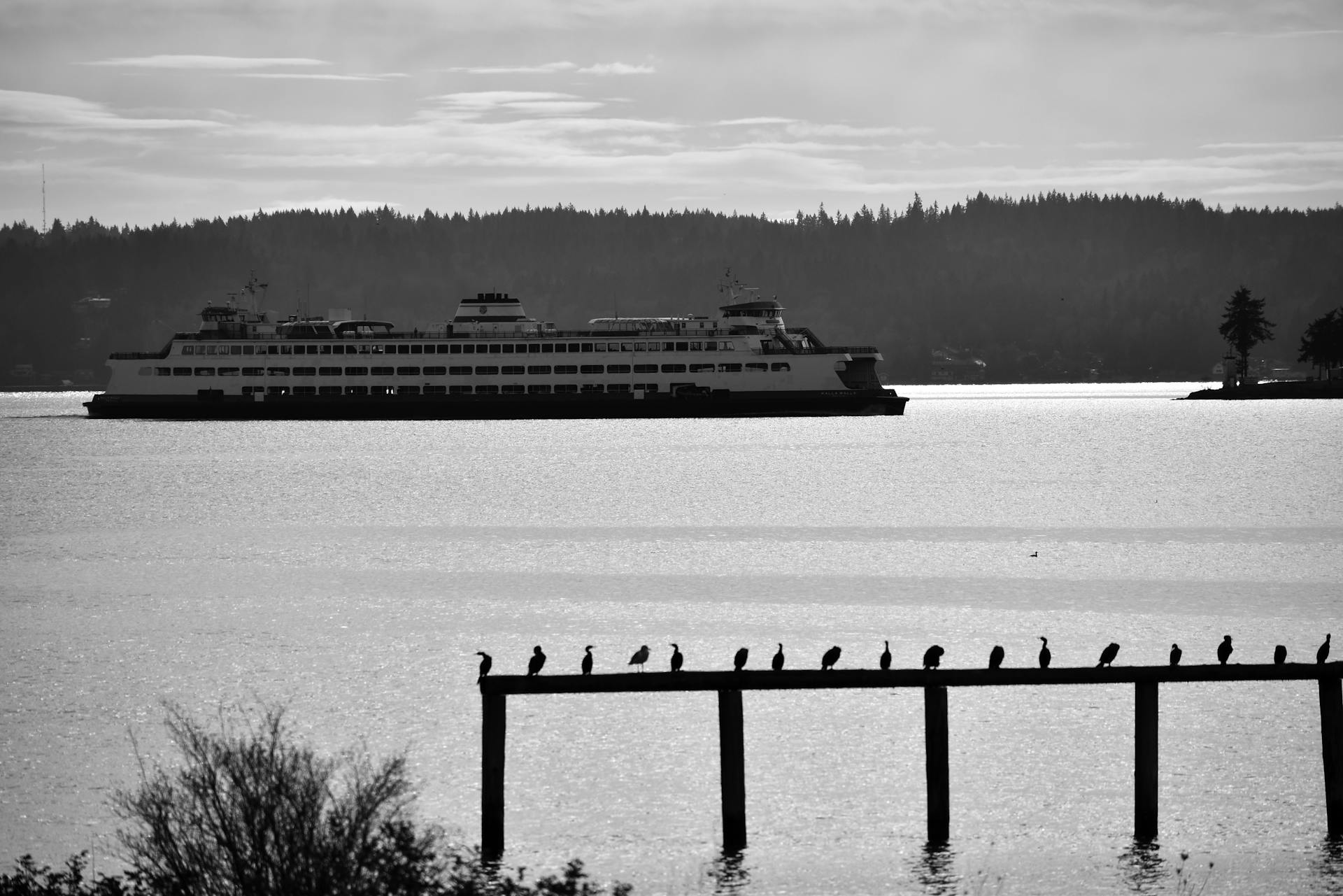
The mv Coho Black Ball Ferry Line offers several routes to get you to your destination. You can reach Sequim in approximately 30 minutes by car, which is just 17 miles away.
The distance to Port Townsend is a bit longer, at 47 miles, but the drive takes around 1.04 hours. If you're heading to Forks, you're looking at a 56.3-mile journey that'll take about 1.1 hours by car.
Here's a quick rundown of the driving times and distances to popular destinations:
- Sequim: 17 miles (27.35 km), approximately 30 minutes by car
- Port Townsend: 47 miles (75.6 km), approximately 1.04 hours by car
- Forks: 56.3 miles (90.6 km), approximately 1.1 hours by car
- Seattle: 82 miles (132 km) via the Bainbridge Ferry, approximately 2.38 hours
Victoria BC to Port Angeles WA
The Coho Ferry from Victoria BC to Port Angeles WA is a great option for travelers. It takes approximately 1.5 hours to cross, making it a leisurely and comfortable experience.
You can walk to the terminal in downtown Victoria with plenty of time to spare before the ferry arrives. The terminal is not usually busy, especially if you arrive early.
Once onboard, you'll find amenities like a gift shop, duty-free shop, restaurant/cafe, and an upper outside deck with partly covered areas. The upper deck is perfect for taking in the beautiful views of the Pacific Northwest.
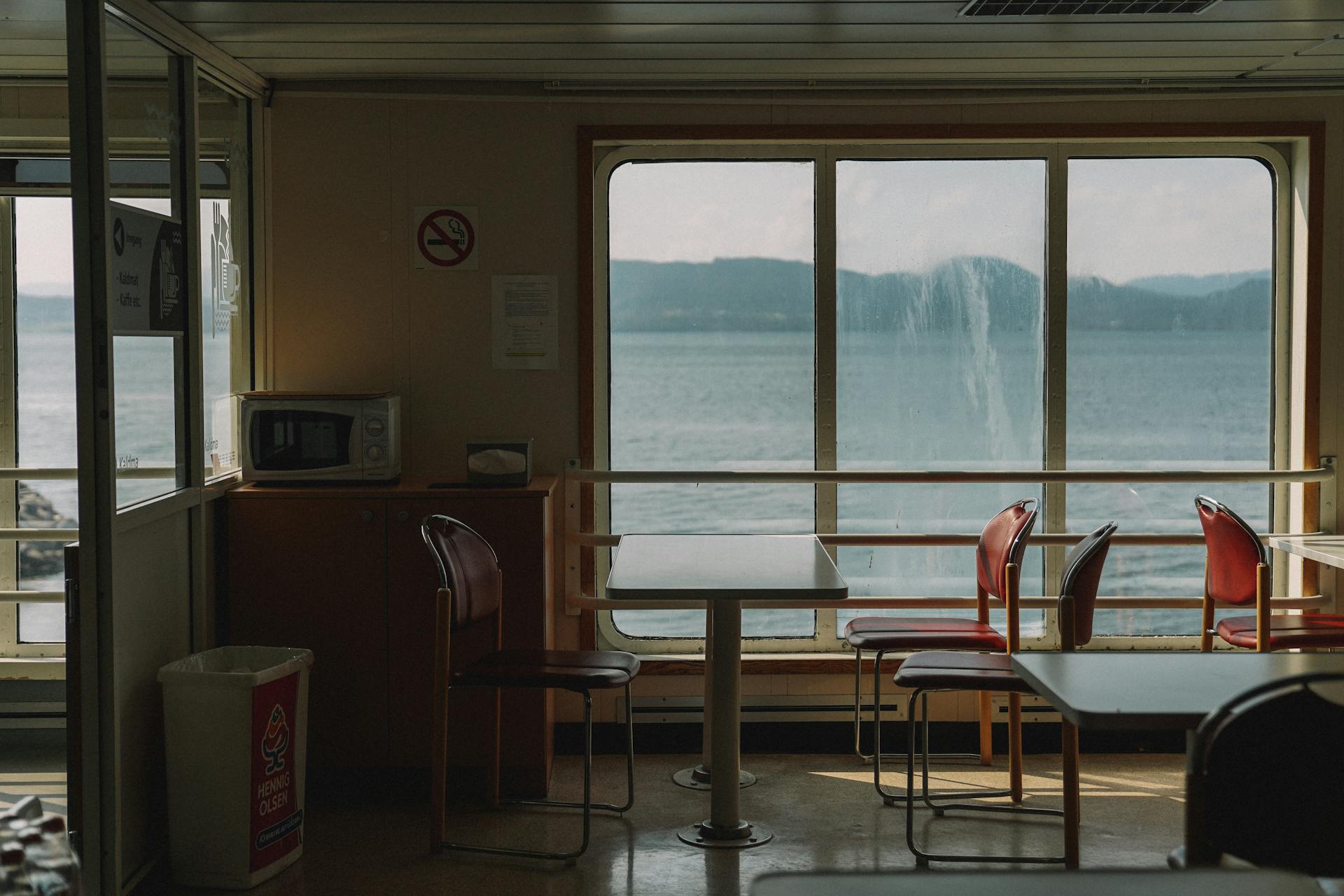
The ferry offers a cafeteria with options like Ivar's clam chowder, pastries, sandwiches, and coffee. You can also bring your own food if you prefer.
The Coho Ferry is a must-do experience when visiting Port Angeles, especially if you're traveling from Seattle. It takes almost 3 hours to get to Victoria from Seattle on the fast ferry, the Clipper, or you can take a regular plane.
The ferry experience is all about taking in the views and enjoying the ride. You'll have plenty of room to roam or stretch out for a nap, making it a great option for those who want to relax during their journey.
The Coho Ferry is an icon in the Pacific Northwest, and the voyage is well worth it. You'll get to experience the thrill of feeling the bone-deep blast of the horns as you depart from the dock and watch the land fade away behind the stern.
Black Ball Terminals

If you're planning a trip to the Black Ball Terminals, you'll want to know how to get there. The terminal in Sequim is 17 miles away, which takes about 30 minutes by car.
The drive from Sequim to Port Townsend is a bit longer, at 47 miles, and will take around 1 hour and 4 minutes by car.
If you're heading to Forks, you're looking at a 56.3-mile drive that will take about an hour and 10 minutes by car.
For those traveling from Seattle, the Bainbridge Ferry is a convenient option, but be prepared for a longer journey. The ferry ride is approximately 82 miles and will take around 2 hours and 38 minutes, depending on wait times.
Accessibility
Accessibility is a crucial aspect of route planning, and it's essential to consider the needs of all users. The Americans with Disabilities Act (ADA) requires public transportation systems to be accessible to people with disabilities.
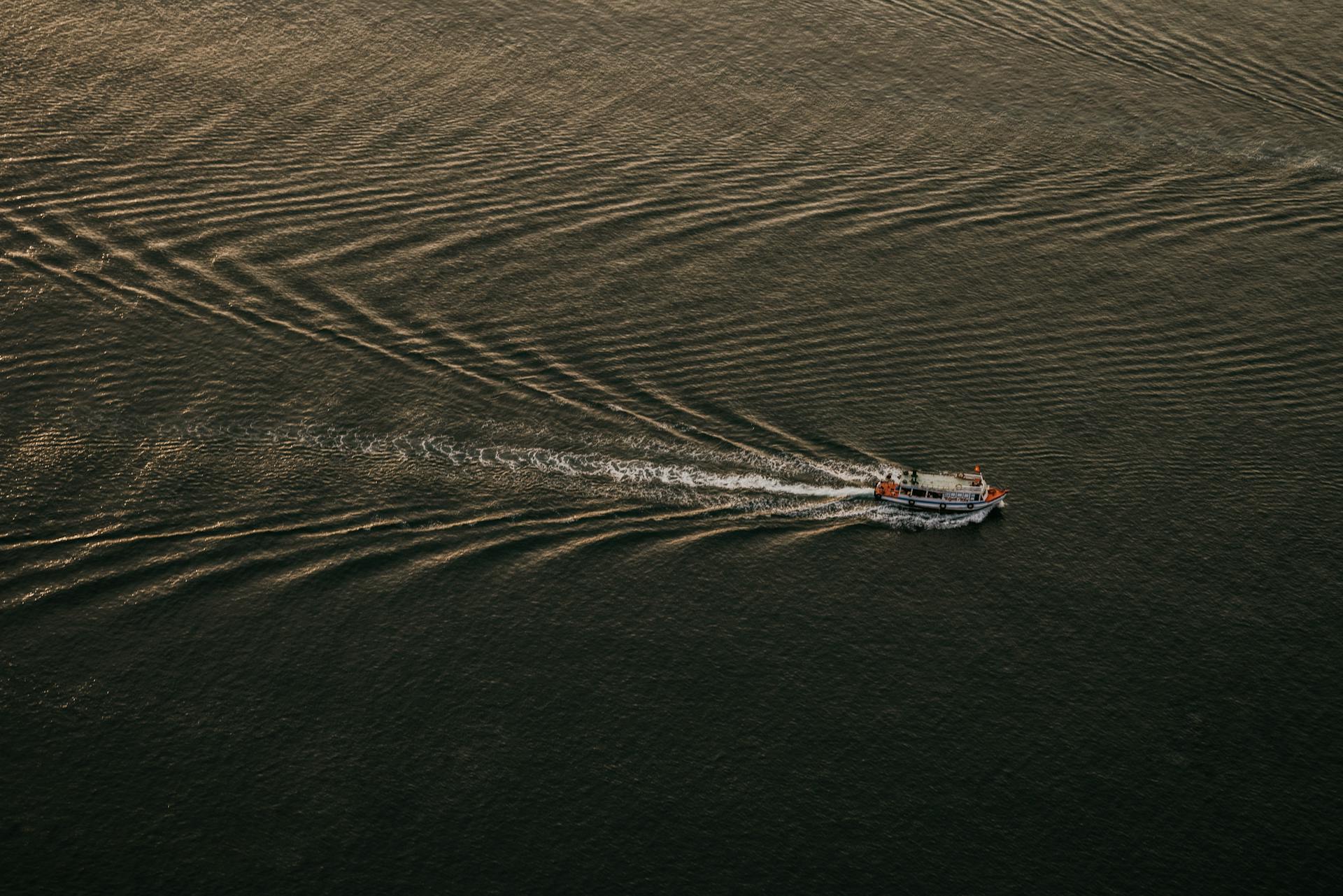
The article highlights that wheelchair-accessible buses and trains are available, making it easier for people with mobility impairments to travel. This is a significant improvement from the past, when accessibility was often an afterthought.
In many cities, pedestrian-friendly infrastructure such as curb cuts, ramps, and wide sidewalks has been implemented, making it easier for people to navigate through public spaces. These features are designed to accommodate wheelchairs, strollers, and other mobility aids.
The article notes that audio signals and visual displays are used at many bus stops and train stations to assist visually impaired travelers. These signals and displays provide essential information about bus and train arrivals, making it easier for people to plan their journeys.
Technology has also played a significant role in improving accessibility, with many transportation systems now offering real-time information through mobile apps and websites. This allows users to plan their routes and make informed decisions about their travel.
Frequently Asked Questions
How early should I show up for the Black Ball ferry?
Arrive 30 minutes before sailing time for non-vehicle passengers and 90 minutes (60 minutes for early sailings) before for vehicle passengers to ensure a smooth check-in process
How many cars does Coho Ferry hold?
Coho Ferry can carry 110 vehicles. It also accommodates 1,000 passengers.
Sources
- https://ondertravel.com/black-ball-ferry-lines-mv-coho/
- https://www.myportangeles.com/coho-ferry.html
- https://www.hellobc.com/listings/vancouver-island_victoria_4547582_black-ball-ferry-line/
- https://news.gov.bc.ca/releases/2014TRAN0023-000401
- https://www.peninsuladailynews.com/news/coho-ferry-ready-for-decades-to-come-black-ball-ferry-line-official-says/
Featured Images: pexels.com
